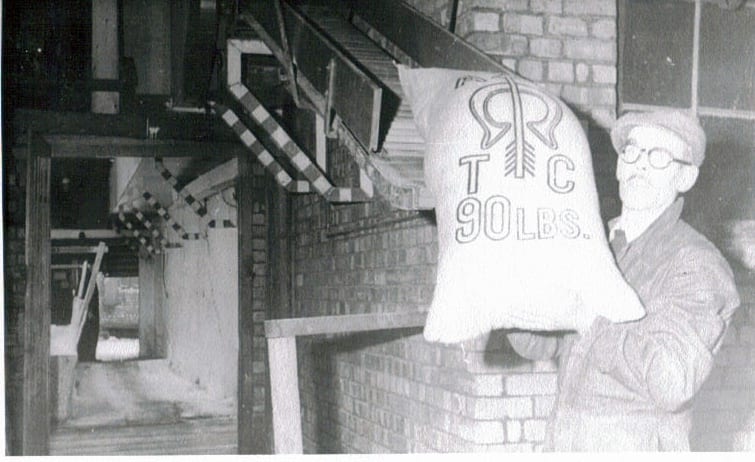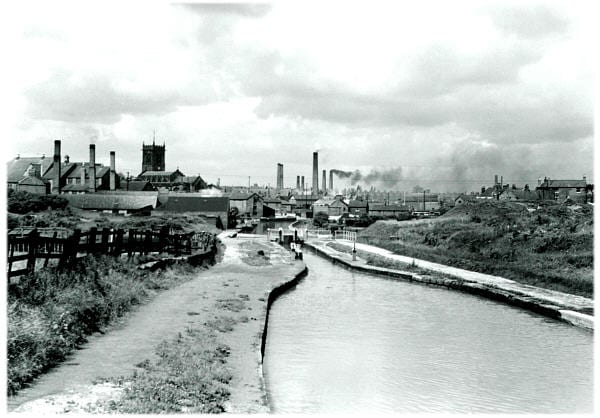CANALS IN MIDDLEWICH
The market town of Middlewich lies within the fertile plain of east Cheshire, situated near the confluence of the rivers Croco and Dane. The origins of the town are Roman, if not earlier and it is from this period that salt plays an integral part of the town’s economy and prosperity.
During the Industrial Revolution there were many changes to the town’s infrastructure including the converging of three canals. As result the population expanded considerably with the settlements of Kinderton and Newton being absorbed as suburbs into Middlewich by the mid-19th century.
As well as salt, Middlewich was noted for its dairy products and the production of silk. The town had significant Roman presence; furthermore, within the town centre is clear evidence of a medieval and early post-medieval street plan, accompanied by a number of buildings that date from this period. Distinction is further stamped through Middlewich’s industrial heritage and, in particular the canals that converge on it.
Three Locks
EXPLORING THE CANAL AGE
Wharves were widely run by Canal & Navigation Companies, however; a wharf was public owned and could be used by any carrying company. Wharves in Middlewich were also owned or leased by factories, run by trade merchants dealing in coal, bricks, timber, corn, hay and straw.
The number of wharves and associated buildings along this stretch of the Trent & Mersey Canal suggests that Middlewich was an important ‘port’ and trading place; three canals converge within the southern part of the town. The better known site was Middlewich Wharf or Bridge Wharf; there was also Canal Wharf or Canal Terrace, Malpas Wharf at the back of the Navigation Inn and St Anne’s Wharf, with others being located at trade sites. Over the years these areas changed function, became disused and renamed, so why were these Wharves important?
Please click on the articles below to read on.......
Suppliers of references:
- The Canal Boatmen 1760-1914, Harry Hanson 1975
- Memoirs of a working boatman in the early 1950’s, Tom Foxton 1988
- Trent and Mersey Canal by Jean Lindsay 1979
- Illustrated History of Canal & River Navigations, Edward Pager Tomlinson
- Ellesmere Port Boat Museum Archives
- Chester Record Office
- SLR consulting
- Allan Earl
- The Waterways Trust
- Fred Bunn
- Aaron Appleton
- Phillip Shales
THE SALT JOURNEY
Using historical documents we can track the shipments of Middlewich salt over the years from Liverpool to…
Belgium, Holland, France, The Channel Islands, England, Ireland, Scotland, New Zealand, Middle East countries, The Far East, India, South America, America, Scandinavia, West Indies, Central Africa, Nigeria, East Indies, Australia and surrounding Islands, Russia (including Prussia) and Denmark.
Suppliers of references:
The Salt Journey … by those involved – Read exerts from the oral archive recordings


